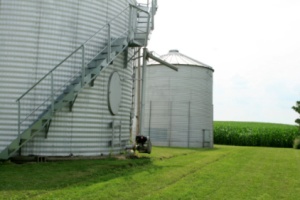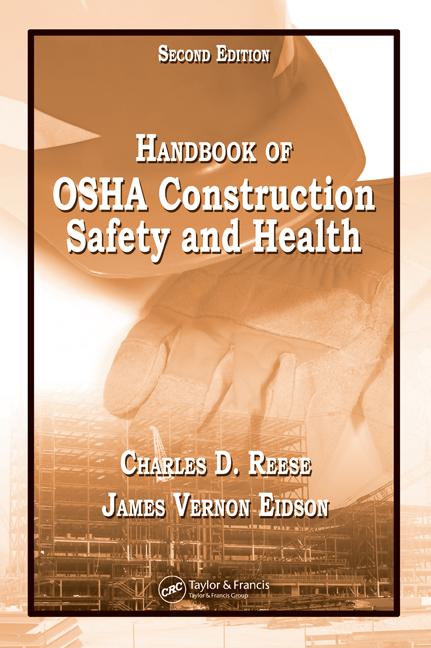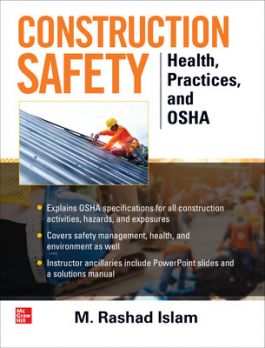 Sen. Chuck Grassley has joined 42 other senators in requesting the Occupational Safety and Health Administration (OSHA) to stop unlawful regulations on small family farms.
Sen. Chuck Grassley has joined 42 other senators in requesting the Occupational Safety and Health Administration (OSHA) to stop unlawful regulations on small family farms.
Grain storage at issue
Since 1976, Congress has exempted small, family-run farms with 10 or fewer employees from OSHA regulations. However, in a 2011 memo, OSHA asserted that on-farm grain storage and handling was not part of farm operations. By viewing grain storage as distinct from the farming operation, the senators’ request said OSHA is creating an artificial distinction that would subject virtually every farm to OSHA regulations without allowing for congressional review and public comment, and in defiance of the law.
“OSHA is overstepping its bounds here,” said the Iowa Republican. “This is yet another example of Washington bureaucrats meddling in the lives of Americans,” Senator Roger Wicker (R-Miss.) said. “OSHA has no business regulating grain storage bins on family farms, and the agency should put a stop to it immediately.”
“The way the administration is going about putting OSHA on family-owned farms is unconscionable. Congress specifically exempts small farming operations from the heavy hand of this bureaucracy. OSHA must stop this overreach and adhere to the law,” said Thad Cochran (R-Miss.), ranking member of the Senate Agriculture Committee.
A narrow interpretation
According to a statement from the senators, ”Using a narrow interpretation of the congressional probation and skewed interpretation of grain bin operations, OSHA has determined that small farming operations are subject to its regulatory reach, oversight and fines. The agency’s view of grain bin operations as distinctly separate from exempt farm operations has the potential of affecting the more than 300,000 farms in the United States that have on-farm grain storage.”
The request from senators was made in a letter to Department of Labor Secretary Thomas Perez, who oversees OSHA, as well as to OSHA, asking that OSHA update guidance correcting its misinterpretation of the law.
This bipartisan effort is led by Sen. Mike Johanns (R-Neb.). The letter also was signed by Sens. Lamar Alexander (R-Tenn.), Kelly Ayotte (R-N.H.), John Barrasso (R-Wyo.), Michael Bennet (D-Colo.), Roy Blunt (R-Mo.), John Boozman (R-Ark.), Richard Burr (R-N.C.), Saxby Chambliss (R-Ga.), Dan Coats (R-Ind.), Tom Coburn (R-Okla.), Thad Cochran (R-Miss.), John Cornyn (R-Texas), Mike Crapo (R-Idaho), Mike Enzi (R-Wyo.), Deb Fischer (R-Neb.), Jeff Flake (R-Ariz.), Lindsey Graham (R-S.C.), Orrin Hatch (R-Utah), John Hoeven (R-N.D.), Jim Inhofe (R-Okla.), Johnny Isakson (R-Ga.), Ron Johnson (R-Wis.), Mark Kirk (R-Ill.), Mike Lee (R-Utah), John McCain (R-Ariz.), Mitch McConnell (R-Ky.), Jerry Moran (R-Kan.), Rand Paul (R-Ky.), Rob Portman (R-Ohio), Mark Pryor (D-Ark.), Jim Risch (R-Idaho), Pat Roberts (R-Kan.), Marco Rubio (R-Fla.), Tim Scott (R-S.C.), Jeff Sessions (R-Ala.), Jeanne Shaheen (D-N.H.), Richard Shelby (R-Ala.), Pat Toomey (R-Pa.), John Thune (R-S.D.), David Vitter (R-La.) and Roger Wicker (R-Miss.).
Editor’s note: We include the letter to Thomas Perez, followed by OSHA’s Michaels’ letter to grain bin operators, an OSHA enforcement memo, and a 1996 letter from OSHA to grain bin operators.
Letter to Labor Secretary Thomas Perez protesting OSHA’s grain farm definition
December 20, 2013
The Honorable Thomas E. Perez
Secretary
U.S. Department of Labor
200 Constitution Avenue, N.W.
Washington, DC 20210
Dear Secretary Perez:
We write to you regarding reports that regulators at the Occupational Safety and Health Administration (OSHA) have begun taking regulatory actions against farms that are specifically exempted by Congress from regulatory enforcement conducted by OSHA. Since 1976, Congress has included specific language in appropriations bills prohibiting OSHA from using appropriated funds to apply requirements under the Occupational Safety and Health Act of 1976 to farming operations with 10 or fewer employees.
It has come to our attention that OSHA is now interpreting this provision so narrowly that virtually every grain farm in the country would be subject to OSHA regulations. OSHA’s interpretation defies the intent of Congress in exempting farming operations from the standards of the Occupational Safety and Health Act.
In viewing a farm’s “grain bin operation” as somehow distinct from its farming operation, OSHA is creating an artificial distinction in an apparent effort to circumvent the Congressional prohibition on regulating farms. The use of grain bins is an integral part of farming operations. Without grain bins, farmers must sell corn and soybeans immediately after harvest, when prices are usually low. Storing grain in bins is thus a fundamental aspect of farming. Any farm that employs 10 or fewer employees and used grain bins only for storage prior to marketing should be exempt, as required by law, from OSHA regulations.
A memo issued by the Director of Enforcement Programs on June 28, 2011, stated that “many of these small farm employers mistakenly assume that the Appropriations Rider precludes OSHA from conducting enforcement activities regardless of the type of operations performed on the farm.” The memo declares that all activities under SIC 072—including drying and fumigating grain—are subject to all OSHA requirements (the memo did not even mention grain storage). There are many farms that have grain dryers on-farm to address wet harvest conditions or fumigate grain to prevent pests from ruining a crop prior to marketing. These are basic, common, and responsible farming activities that OSHA has arbitrarily decided are non-exempt.
Worker safety is an important concern for all of us—including the many farmers who probably know better than OSHA regulators how to keep themselves and their employees safe on farms. If the Administration believes that OSHA should be able to enforce its regulations on farms, it should make that case to Congress rather than twisting the law in the service of bureaucratic mission creep. Until then, Congress has spoken clearly and we sincerely hope that you will support America’s farmers and respect the intent of Congress by reining in OSHA.
We would ask that you direct OSHA to take the following three steps to alleviate this concern.
First, OSHA should cease all actions predicated on this interpretation, which is inconsistent with Congressional intent.
It is important that OSHA also issue guidance correcting this misinterpretation of the law. We suggest consulting with the U.S. Department of Agriculture and organizations representing farmers to assist with this guidance.
Finally, we ask that OSHA provide a list and description of regulatory actions taken against farms with incorrectly categorized non-farming activities and 10 or fewer employees since the June 2011 memo. Given the nearly four decades of Congressional prohibition of OSHA enforcement against farms, this should be a simple request to fulfill.
We would appreciate your response by February 1, 2014, to include a copy of the corrected guidance, the data regarding enforcement actions on farms, and confirmation that OSHA will cease such enforcement.
OSHA chief David Michaels’ letter to grain storage operators
August 4, 2010
Dear Grain Storage Facility Operator:
Last week, two teenagers (ages 14 and 19) were killed in a tragic incident involving a grain elevator in Illinois. Both young workers suffocated after being engulfed in a grain bin they had entered to help clear. A third young worker was pulled out of the storage bin alive, and was hospitalized after being trapped for 12 hours.
Unfortunately, this was not a rare occurrence.
Researchers at Purdue University documented 38 grain entrapments in 2009 alone. OSHA has found that grain entrapments generally occur because of employer negligence, non-compliance with OSHA standards, and/or poor safety and health practices.
I am writing to you today because it is your responsibility to prevent your workers from dying in grain storage facilities. All employers, and especially those in high hazard industries such as the grain industry, must recognize as well as prevent workplace hazards. As an employer, you must be vigilant and always follow the long established, common sense safety practices that will prevent these tragedies.
A copy of OSHA’s Grain Handling Facilities standard, 29 CFR 1910.272, is enclosed for your reference. This standard contains the rules that must be followed. States that operate their own occupational safety and health programs under plans approved by Federal OSHA enforce comparable standards but may have different or additional requirements. A list of State plans is available at http://www.osha.gov/dcsp/osp/index.html.
When workers enter storage bins, employers must (among other things):
Turn off and lock out all powered equipment associated with the bin, including augers used to help move the grain, so that the grain is not being emptied or moving out or into the bin. Standing on moving grain is deadly; the grain acts like 'quicksand' and can bury a worker in seconds. Moving grain out of a bin while a worker is in the bin creates a suction that can pull the workers into the grain in seconds.
Prohibit walking down grain and similar practices where an employee walks on grain to make it flow.
Provide all employees a body harness with a lifeline, or a boatswains chair, and ensure that it is secured prior to the employee entering the bin.
Provide an observer stationed outside the bin or silo being entered by an employee. Ensure the observer is equipped to provide assistance and that their only task is to continuously track the employee in the bin
Prohibit workers from entry into bins or silos underneath a bridging condition, or where a build-up of grain products on the sides could fall and bury them.
Test the air within a bin or silo prior to entry for the presence of combustible and toxic gases, and to determine if there is sufficient oxygen./
Ensure a permit is issued for each instance a worker enters a bin or silo, certifying that the precautions listed above have been implemented.
As an employer of workers facing these hazards, you have the legal obligation to protect and train your workers. OSHA will not tolerate non-compliance with the Grain Handling Facilities standard. OSHA has investigated several cases involving worker entry into grain storage bins where we have found that the employer was aware of the hazards and of OSHA’s standards, but failed to train or protect the workers entering the bin. OSHA has aggressively pursued these cases and we will continue to use our enforcement authority to the fullest extent possible. Just in the last 10 months, OSHA has issued three large penalty citations to grain elevator operators for these very hazards.
On November 23, 2009, OSHA fined Tempel Grain Elevators LLP more than $1.5 million following the May 29, 2009 death of a teenage worker at the company's Haswell, Colorado grain storage operation. The youth suffocated after being engulfed by grain in one of the facility’s bins. The company also exposed three other teenage workers to the cited hazards.
On May 27, 2010, OSHA fined the South Dakota Wheat Growers Association of Aberdeen, South Dakota more than $1.6 million following the death of a worker who had suffocated after being engulfed by grain. OSHA’s investigation found that five additional workers were also at risk of being engulfed when they were sent into the bin to dig the victim out.
On August 4, 2010, OSHA fined Cooperative Plus, Inc. in Burlington, Wisconsin $721,000after a worker was buried up to his chest and trapped in frozen soybeans. The worker was ultimately rescued after a four hour ordeal.
If any employee dies in a grain storage facility, in addition to any civil penalties proposed, OSHA will consider referring the incident to the Department of Justice for criminal prosecution pursuant to the criminal provisions of the Occupational Safety and Health Act of 1970.
I am calling on you today to prevent these needless deaths. OSHA State Consultation Programs are available to assist you in complying with OSHA standards. If you have further questions, please contact your local OSHA Area or State Plan Office or your State Consultation Program. More information is available at www.osha.gov.
Sincerely,
David Michaels, PhD, MPH
|
April 12, 2011
|
|
|
MEMORANDUM FOR: |
REGIONAL ADMINISTRATORS |
|
FROM: |
RICHARD E. FAIRFAX |
|
SUBJECT: |
Inclusion of Grain Handling Hazards to the High-Emphasis Hazards |
The purpose of this memorandum is to authorize the addition of grain handling hazards covered under 29 CFR 1910.272, Grain Handling Facilities, to the list of High-Emphasis Hazards in the Severe Violator Enforcement Program (SVEP).
The inclusion of high gravity serious violations of 29 CFR 1910.272 as criteria to qualify for SVEP is necessary to address the troubling and inexcusable increase in fatalities, entrapments, and injuries within this high-hazard industry. Therefore, an inspection in which OSHA finds two or more willful or repeated violations or failure-to-abate notices (or any combination of these violations/notices), based on high gravity serious violations related to 29 CFR 1910.272, Grain Handling Facilities, will now be considered a severe violator enforcement case.
This policy is effective for any citations under 29 CFR 1910.272 that are issued on or after the date of this memorandum. In the near future, Section XI of Instruction CPL 02-00-149, Severe Violator Enforcement Program (SVEP), will be updated to reflect this policy change. If you have any questions regarding this memorandum, please contact Office of General Industry Enforcement at (202) 693-1850.
From OSHA national offices, Thursday, November 21, 1996
OSHA Strengthens Steps To Reduce Grain Handling Risks Compliance Directive To Assist In Inspections Issued
Further action to protect workers from against grain handling accidents has been taken by the Occupational Safety and Health Administration (OSHA).
The agency is giving its inspectors new directions that clarify provisions of the OSHA grain handling standard. The directive includes revisions made March 8th that ensured greater protection from being smothered by grain or getting trapped when mechanical equipment is used to move the grain.
The revisions were prompted by the Oct. 22, 1993 death of Patrick Hayes, who was walking across the corn in the Showell Farms, Inc., corn structure in De Funiak Springs, Fla., when he was pulled down into the grain and suffocated.
OSHA's directive outlines the facilities covered by the standard, according to Standard Industrial Classification (SIC) codes. It also clarifies such topics as emergency action plans, employee training, hot work permits, entry into grain storage structures, informing contractors on safety rules of the facilities, requirements for housekeeping practices to reduce accumulation of dust and prevent explosions, handling of spills, emergency escape facilities, temperatures for drying grain and storage capacity of the workplace.
Only compliance safety and health officers who are well trained and experienced in grain handling inspections should normally be assigned to conduct the inspections, according to the directive.
It also directs compliance officers to wear natural fiber clothing such as cotton that is non-spark-producing and to take precautions in using manlifts and other means to gain access to upper levels of a facility.
States and territories operating their own OSHA-approved occupational safety and health programs have six months to adopt similar guidelines or an alternative that provides "at least as effective" employee protection.
OSHA's Instruction CPL 2-1.4C, "Grain Handling Facilities--Inspection Guidance and Standard Clarification," is available on the Internet at http://www.osha.gov under Other OSHA Documents, Directives, CPL 2-1.4C.





